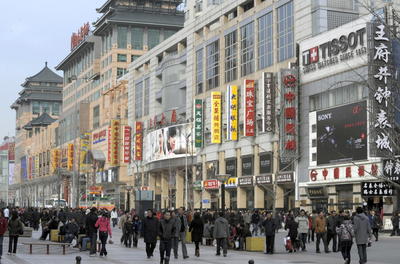But China’s economy has picked up, with growth expected to be over 8 per cent this year, exports growing strongly again and a mild inflationary trend is in evidence.
The pattern over the past few years is part of the regular growth and policy cycle. Growth in 2012 dipped below 8 per cent, although the government remained relatively calm, taking only modest steps at stabilisation. Some analysts saw this as the beginning of a shift in gear in China, to a longer term 7 per cent growth rate. Indeed, this idea has become part of the lexicon, and doubling incomes over the next decade (deliverable with a 7.2 per cent growth rate) is now the official target.
But growth in 2012 was nonetheless a little more disappointing than might have been expected since, whether because of the leadership transition or whether for other reasons, policy makers were reluctant to adopt aggressive expansionary policies as the economy picked itself up. Policy makers had learned a lesson with the stimulus package in 2008. The government’s massive investment programs in the past had been criticised for increasing financial and fiscal risks so government officials accepted the need to tolerate slower growth in order to underpin its sustainability. The policy objective of stabilising, rather than boosting, growth in the face of increasing downside risks to the economy came to dominate policy thinking.
There is no automatic or mechanical guarantee that the Chinese economy will go ticking along at 7 or 8 per cent over the coming decade. As has been remarked before, quite apart from adjustment to continuing weakness in external markets, there are challenges at home that, not met, could knock it right off course. But as Yu Yongding observes in this week’s lead essay there is no reason to think that in 2013 the Chinese economy will not continue the trend of growth that began in the third quarter of 2012. As Yu says, ‘China has not exhausted its ammunition yet’.
Barring unexpected and significant shocks, Yu argues, the Chinese economy will probably grow at a rate higher than 8 per cent this year. This is reflected in the surge in demand for imported industrial raw materials, like iron ore and imported coal, over the past months
Yu describes what he calls the ‘Groundhog Day pattern of Chinese growth’: ‘Even since the global financial crisis, the Chinese economy has followed the familiar cyclical pattern of the past two decades: high investment supported by expansionary policy drives growth; inflation follows after lag; policy is tightened; growth drops away, but inflation is still high; more tightening; inflation falls at last, but growth falls away more than desired at the same time; policy is shifted from tight to expansionary; again, led by investment, growth rebounds. And a new economic cycle starts’.
Yu’s point is that there is still strong bounce left in the Chinese economy. When growth becomes inflationary, blunt contractionary policies rein it in. Recovery is stimulated by fiscal expansion, and the economy bounces back. The potential rate of growth remains high, because the scope for transforming and diffusing technologies that are readily adapted across the economy is still far from exhausted. But that won’t be so forever.
Yu sees a particular structural vulnerability in the financial or capital market. A worrying issue, he says, is the rapid development of the so-called shadow banking system.
‘The total assets managed by the shadow banking system have risen exponentially since 2009 — in 2012, according to market sources, they amounted to more than 14 trillion RMB and accounted for a third of GDP. The high returns of asset pools extended through the shadow banking system are based on the profitability of the private enterprises. However, in 2012 the profit margins of enterprises were low and increasingly precarious. The extremely high money supply (M2)-to-GDP ratio of 180 per cent further complicates China’s financial fragility. The possibility of a collapse of the shadow banking system and the seriousness of the effects of such a collapse on the wider financial system would be much more serious than that of the underground credit networks and local government finance platforms that caused so much concern in 2012’. This weakness, as well as rising corporate debt and the inflationary pressure, including in the real estate market, Yu concludes, are the main worries.
These are the urgent challenges for China’s new government.
In the three decades before the bubble burst in the 1990s, the Groundhog Day pattern of growth and economic policy making was also more or less a feature of the Japanese economy. But in Japan then, as in China in the coming years, growth was achieved at the expense of structural adjustment. There are signs that financial reform could now become a priority for the Chinese government. Certainly, without structural reform and the discovery of a new, more sustainable growth pattern, China too could eventually face stagnation in its economic growth.
Peter Drysdale is Editor of the East Asia Forum.

